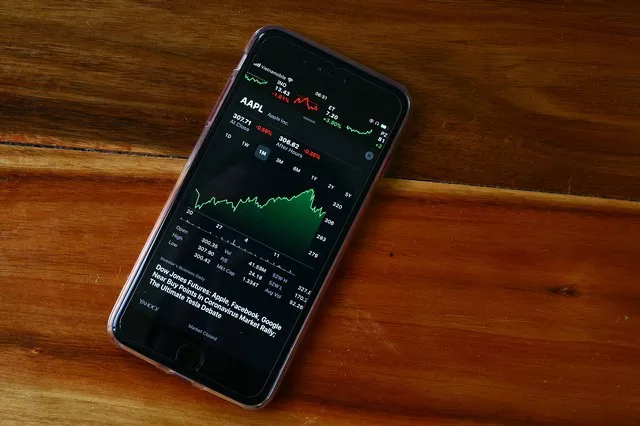In the world of futures trading, short selling provides an intriguing opportunity to profit from downward price movements. While many investors are familiar with buying futures contracts in anticipation of price appreciation, shorting futures contracts allows traders to capitalize on falling prices. This strategy has its own unique mechanics, benefits, and considerations that traders should understand before engaging in short selling. In this comprehensive guide, we will explore the intricacies of shorting futures contracts, providing you with the knowledge and insights you need to navigate this strategy effectively.
The Concept of Short Selling Futures
Short selling in the context of futures contracts involves selling contracts that you do not own, with the intention of buying them back at a later time when the price has decreased. Here’s what you need to know:
Definition and Purpose:
Short selling is a strategy employed by traders to profit from declining prices in the futures market. By selling futures contracts that they do not currently own, traders aim to buy them back at a lower price in the future, thereby generating a profit.
Short Selling vs. Long Positions:
Short selling differs from traditional long positions in futures trading. When you go long, you buy contracts with the expectation that their value will increase. In contrast, short selling involves selling contracts with the expectation that their value will decrease.
The Role of Margin:
Margin plays a crucial role in short selling futures contracts. When shorting, you must provide collateral (margin) to cover any potential losses that may occur if the price of the futures contract increases. The margin requirements for short positions are typically higher than those for long positions.
Mechanics of Short Selling Futures
To effectively short sell futures contracts, it is essential to understand the mechanics involved:
Borrowing and Selling:
To initiate a short position, you need to borrow the futures contracts from a broker. This borrowing process involves an agreement to return the contracts at a later date. Once you have borrowed the contracts, you sell them in the market, aiming to repurchase them at a lower price in the future.
Obligations and Repurchase:
When you short sell futures contracts, you incur certain obligations. At a specified time in the future, you must repurchase the same number of contracts you initially sold. This process is known as covering your short position. By buying back the contracts, you return them to the lender.
Tracking and Managing Positions:
Short selling requires diligent monitoring of positions and market trends. As the price of the futures contract decreases, your profit potential increases. However, if the price rises, your losses are potentially unlimited. It is crucial to implement risk management strategies, such as setting stop-loss orders and adjusting position sizes, to protect yourself from significant losses.
Benefits and Considerations of Short Selling Futures
Short selling futures contracts can offer several benefits and opportunities, but it also comes with its own set of considerations:
Profiting from Market Downturns:
Short selling allows you to profit from downward price movements. This provides an additional opportunity to generate profits when the market is experiencing a bearish trend. Short selling can be used as a standalone profit-generating strategy or as a hedging tool to offset losses from long positions.
Portfolio Diversification:
Short selling futures contracts can help diversify your investment portfolio. By having both long and short positions, you can balance your exposure to different market conditions. During bearish market periods, short positions can potentially offset losses incurred from other investments.
Risk and Challenges:
Short selling comes with inherent risks and challenges that traders must consider:
Unlimited Potential Losses: When short selling futures contracts, the price can theoretically rise infinitely, resulting in unlimited potential losses. This risk necessitates careful risk management and the use of appropriate stop-loss orders.
Timing Market Reversals: Identifying the right time to initiate a short position and cover it requires accurate timing. Market reversals can happen unexpectedly, making it challenging to capture the entire downward price movement.
Emotional Management: Short selling can be psychologically demanding, as it goes against the natural bias of most investors who expect prices to rise. Traders must overcome emotions and stick to their trading plans.
Margin Requirements and Costs:
Short selling futures contracts often requires higher margin requirements compared to long positions. Additionally, there may be borrowing fees and interest expenses associated with maintaining short positions. Traders must consider these costs when evaluating the viability of short selling strategies.
Strategies for Short Selling Futures
To optimize your short selling efforts, consider implementing the following strategies:
Technical Analysis:
Technical analysis can help identify potential short-selling opportunities by analyzing price charts, indicators, and patterns. Utilizing tools such as moving averages, trendlines, and oscillators can assist in determining optimal entry and exit points.
Fundamental Analysis:
Fundamental analysis plays a vital role in short selling futures contracts. By assessing factors such as economic data, company earnings reports, supply and demand dynamics, and industry trends, traders can identify potential catalysts for price declines.
Risk Management:
Risk management is crucial when engaging in short selling. Traders should set stop-loss orders to limit potential losses and employ proper position sizing techniques. Implementing disciplined risk management protocols can help protect capital and minimize the impact of adverse price movements.
Conclusion
Short selling futures contracts offers traders a unique opportunity to profit from downward price movements. By understanding the mechanics, benefits, and considerations of short selling, you can effectively incorporate this strategy into your trading repertoire. However, it is important to recognize the risks involved and implement robust risk management techniques. With proper knowledge, analysis, and discipline, short selling futures contracts can be a valuable tool in navigating bearish market conditions and potentially generating profits.


